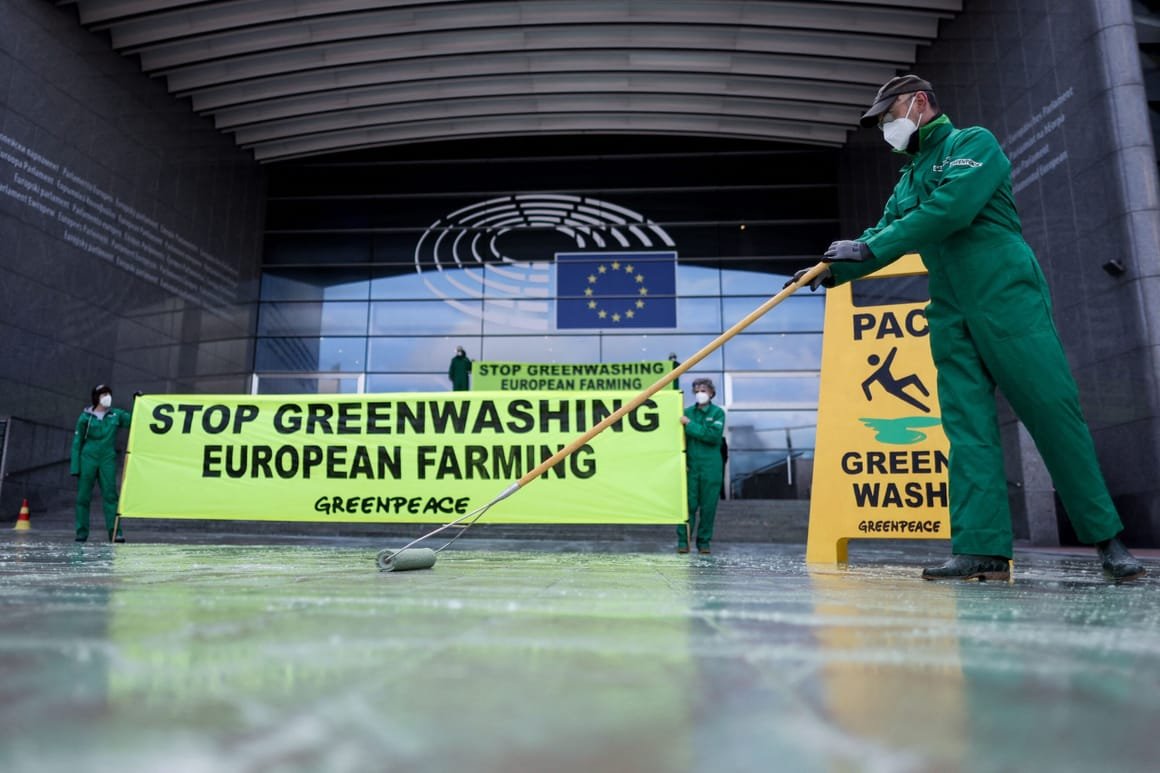EU countries are using green farm subsidies to reward status quo practices instead of driving real environmental action, NGOs say.

BRUSSELS — Europe’s multibillion-euro attempt to green its farming is turning into an exercise in creative accounting rather than genuine environmental progress, according to a new report by BirdLife Europe and NABU.
Under the European Union’s overhauled Common Agricultural Policy, “eco-schemes” were hailed as a game changer for sustainable agriculture. But instead of delivering meaningful change, the report’s findings suggest that up to a quarter of the CAP’s direct payment budget — €48.5 billion — may be tied to measures that often preserve business as usual.
“If we are serious about having long-term food security, eco-schemes need to do what they were meant to — not just provide farmers with a green-labeled income boost,” said Tatiana Nemcová, EU agriculture coordinator at BirdLife Europe.
Farming accounts for around 10 percent of the EU’s greenhouse gas emissions and significantly harms soils, waterways and biodiversity.
The CAP reform, in place since 2023, was meant to align farming subsidies with the EU’s Green Deal goals of cutting emissions, restoring nature and reducing pollution. But BirdLife Europe and NABU argue that national governments have deliberately chosen to prioritize weak eco-schemes that maximize payouts while avoiding real reforms.
Poland’s carbon farming scheme, for example, attracted more than three times the expected applicants, and its liquid fertilizer subsidy was taken up at nearly 19 times the anticipated rate — suggesting farmers were being paid for what they already did. Spain and the Netherlands also favor “easy-win” options that boost enrollment without delivering genuine environmental benefits. In the Netherlands, a points-based system offers 22 eco-schemes, but payment caps discourage going beyond the bare minimum.
Even former Agriculture Commissioner Janusz Wojciechowski, who oversaw the introduction of the eco-schemes, has acknowledged they do not necessarily push farmers to adopt new measures.
“Eco-schemes are nothing more than shifting a portion of direct payments to active farmers who want to ‘eco-scheme,’” he said last year, noting on another occasion that farmers can gain extra subsidies for activities already in place.
Fix or fail
Some programs, however, show promise. Slovakia’s buffer strip scheme helped restore biodiversity in intensively farmed regions. Poland’s water retention scheme, though underfunded, uses satellite monitoring to gauge impact — a sign that better design can yield real results.
Yet complex paperwork, low payouts and red tape often deter farmers from more ambitious undertakings. In Germany, a €1.6 billion eco-scheme saw only 16.5 percent participation, partly due to its heavy bureaucracy.

The report also criticizes the 2024 CAP “simplification” package, pushed through after mass farmer protests, for weakening environmental obligations.
“With the climate and biodiversity crises already affecting millions of farms, urgent action is essential,” said Max Meister, soil policy officer at NABU. “Member states must step up to make eco-schemes truly effective and attractive to farmers.”
Without reform, the conservation groups warn, the EU risks missing its biodiversity and climate targets, leaving eco-schemes as a permanent subsidy for the status quo instead of a driver of sustainable farming.




